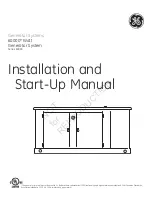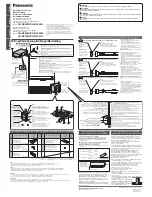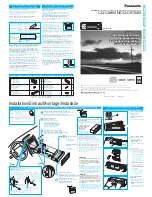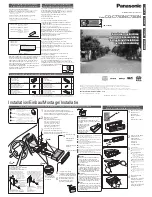
9035 Owner’s Manual
••••
(V 1.0.9)
Page 9 of 27
Discrete AES Audio Input
The 9035 can accept 16 channels (8 pairs) of discrete AES audio on 75 ohm BNC connections. The
AES must have a nominal rate of approximately 48 kHz. Sample rate conversion is employed to
account for minor clock rate differences in the input AES stream and the input video stream. However,
the card does not support AES input at 32 kHz, 44.1 kHz, 96 kHz or 192 kHz rates.
Discrete AES Audio Output
The 9035 can emit 16 channels (8 pairs) of discrete AES audio on 75 ohm BNC connections. The AES
clock rate will be precisely locked to the output video rate.
AES Audio Input Advanced Features
AES Sample Rate Converter Bypass
The card’s AES inputs have built in sample rate converters that are enabled by default. This allows the
card to interface with asynchronous AES sources (sources who’s AES timing does not match the video
reference timing.). They can be bypassed with a control in Dashboard or the front panel. This is a
necessity when trying to embed non-PCM AES audio such a Dolby E or Dolby Digital audio streams.
This control is off by default.
Low latency Audio Embedding
Sometimes it is desirable to embed AES with minimum latency. For example, if you wanted to embed
Dolby E audio into video with no latency, and delay the video by one frame to account for Dolby E
encoding delay. By turning this control on for a given AES pair, the pair will be directly embedded into
it’s corresponding group, bypassing the normal frame sync audio delay. (AES Pair 1 into Embedded
Group 1, ch1&2, AES pair 2 into Embedded Group 2, ch3&4). This control overrides the standard
audio routing system: if AES Pair 1 is selected, then the controls to route into Embedded group 1, ch
&2 don’t apply. There is no gain or polarity control available when this option is selected. This control
is off by default
Low latency AES Passthrough
This control is similar to low latency audio embedding. If selected for input pair X it causes AES
output pair X to act as a bit for bit copy of AES input pair X. This over rides the normal audio routing
and delay. No gain and polarity adjustments are possible. This control is off by default.
Documentation Terms
The following terms are used throughout this guide:
•
“
Frame
” refers to the
8310
frame that houses the
9035
card.
•
“
Operator
” and “
User
” both refer to the person who uses the
9035
.
•
“
Board
” and “
Card
” all refer to the
9035
card itself, including all components and
switches.
•
“
System
” and “
Video system
” refers to the mix of interconnected production and
terminal equipment in which the
9035
operates.










































